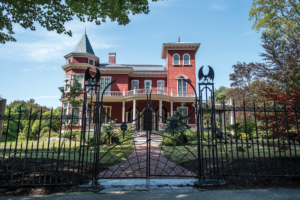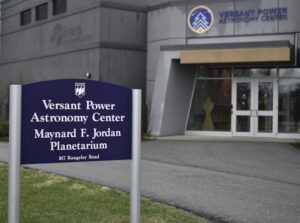In the Arthur St. John Hill Auditorium in Barrows Hall on Oct. 6, a group of Hispanic employees working for the Natural Resources Conservation Services (NRCS) discussed their work throughout the state of Maine. This presentation, titled “Hispanics Helping People Help the Land Throughout Maine” was a part of the Hispanic Heritage Lecture Series for 2016. This was the last event in the series, but was very different than its predecessors, talking less of diversity and more about the work the group did.
State Conservationist Juan Hernandez joked before starting the presentation, mentioning that he and his employees made up a large fraction of the minority population in the state of Maine. The lack of diversity in Maine does not go unnoticed. Almost 94 percent of people residing in the state are white, leaving the remaining six percent for all minorities. “We’re trying [to increase diversity],” Hernandez said.
The NRCS, which is part of the United States Department of Agriculture (USDA), employs approximately 10,000 people, working in every state and United States territory. About 5.4 percent of these employees are of Hispanic heritage. “We do conservation work on private land,” Hernandez said, continuing on to talk about the importance of their work.
“To give a national perspective to this, in Syria, a sandstorm happened in 2011 that was due to the largest drought. Damascus hit its breaking point and people flooded into cities. Then trouble happened.” Without a proper way to grow on their land, cities were flooded and there was a shortage of food. This is the reason why, in the United States, the Central Intelligence Agency manages where people can grow on tillable land, so that resources are made and consumed.
The state of Maine has a large role in the United States’ agriculture. Maine is first in wild blueberry production and is also the most forested state of the continental United States. This means that Hernandez, along with his other employees — including soil conservationists Misha Vargas and Luis Aponte — remain busy in their jobs. Their work is rooted in helping Maine farmers and foresters work sustainably and effectively. Examples of some of the work they help Mainers with includes issues such as energy improvement, erosion prevention, air quality and compost facilities.
“I love working with people and see the differences we make on the farms afterwards,” Hernandez said.
Others agreed, but also shared the importance of being outdoors personally. “I love working in the forest. The forest — well I love everything — but working in the forest with farmers and foresters is just great,” Aponte said. Vargas mentioned that she also loved being outdoors.
Students and other spectators listened carefully to the event, which occurred on the eve of the University of Maine’s fall break.
“I really learned a lot about career opportunities in Maine…a lot of things I wasn’t expecting to learn, especially about what the NRCS is,” Ben Flanagan, a first-year undergraduate student, said after the lecture.
“Well I was just fascinated about all the things done to improve the earth,” university student Jules Hathaway said, discussing the work that the NRCS does to help Maine and its local farmers and foresters. But the NRCS also helps the rest of the U.S., an effort that is surely appreciated nationwide.









